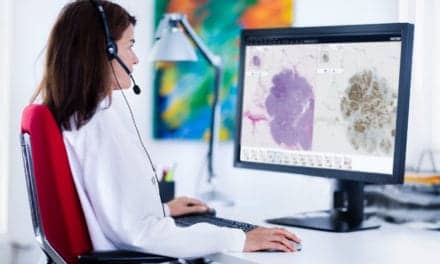By Nicholas Borgert

Domestic diagnostic testing is regulated by a collection of government agencies, departments, and divisions, with assistance from state agencies and, in many cases, third-party partners. Here’s a status report on legislation and regulations affecting clinical labs.
Congress Considers Incentives
Fifteen members of the House of Representatives are cosponsoring the Medical Laboratory Personnel Shortage Act. The House Subcommittee on Labor, Health, and Human Services held hearings on the proposed law (HR 623) earlier this year. The law would provide financial incentives for students enrolling in allied health professions.
Under the proposal, the government would fund educational grants for students in medical technology programs in return for obligated service after graduation. Positions covered by the funding would include medical technologists, cytotechnologists, histotechnologists, phlebotomists, and medical-lab technicians. The $12 million Congress appropriated for the Allied Health Project Grants program for fiscal year 2003 was the highest funding level for the program to date.

The 4,000-employee Centers for Medicare and Medicaid Services (CMS) works with the Food and Drug Administration (FDA) and Centers for Disease Control and Prevention (CDC) to implement the requirements of the 1988 CLIA.
“We regulate labs and the testing they perform, rather than manufacturers,” says Judy Yost, Director of the Division of Laboratory Services within CMS. Whereas her agency enforces quality standards and minimum qualifications for personnel in CLIA-registered laboratories, the FDA is responsible for ranking the full range of diagnostic tests as high or moderate complexity or CLIA-waived.
Although all states must comply with minimum requirements set forth in CLIA, a dozen or so have adopted their own laboratory licensing programs, which may involve more stringent rules.
About 180,000 CLIA-registered laboratories operate in the United States, Yost says. The overwhelming majority—nearly 101,000—are classified as physician office laboratories. CMS inspects, via the states or approved accrediting organizations, about 20,000 laboratories each year. In the inspections, CMS concentrates on the systems and processes each facility uses to ensure accurate and reliable testing.
“In the early years after adoption of CLIA, many labs didn’t know what quality control was. They didn’t perform proficiency testing, and record-keeping was poorly done,” Yost says. “Initially, about 30% were falling short. For the most part, labs have improved their performance. We’ve reduced deficient labs to single digits.”

Yost says her agency imposes sanctions on about 150 labs each year. Penalties can range from requiring direct CMS oversight at a lab, to taking away Medicare payments or reducing the range of tests labs are allowed to perform. In the most extreme cases, the agency can move to pull a lab’s license to operate. That occurs only after the laboratory has had the opportunity to correct its problems and refuses to do so, she says.
“Our goal is to offer labs more flexibility and responsibility and exercise a much more logical approach to oversight of quality testing,” Yost says.
Final CLIA Rules Published
During 2003, CMS published its final 1988 CLIA quality and personnel rules for laboratory services. The new regulations enable labs in specialty and subspecialty areas to reduce the frequency of quality control (QC) ensurances. They also bring all nonwaived tests under the same QC requirements. Mandated personnel standards vary according to test complexity. Officials say the simplified regulations should improve the flow of patient specimens through the lab and reduce errors.
As recommended by the Clinical Laboratory Improvement Advisory Committee (CLIAC), the rules now require laboratories to validate the accuracy of both moderately complex and highly complex tests prior to the testing of patient specimens and the reporting of results. But requirements for routine QC will be more flexible.
Lab directors should note that the new rules “grandfather” certain non-board–certified individuals with a doctoral degree who have served or are currently serving as a director of a laboratory performing high-complexity testing. They can continue directing high-complexity laboratories despite their lack of board certification. However, the rules mandate that new directors of high-complexity laboratories who have a doctorate, rather than a medical degree, will need to be board-certified.

The CLIA regulation requires that the PT samples be tested in the same manner and by the same individuals as patient testing. PT programs that provide the samples undergo an annual and ongoing review process coordinated by CMS and the CDC.
As the proficiency testing gains acceptance, CMS expects the PT focus to eliminate failures in at least 90% of the total scores from enrolled laboratories, while boosting the level of CLIA labs properly enrolled and participating in PT to 95% or more.
Ensuring Laboratory Worker Safety
Although patient safety is a major focus of the regulatory process, other regulations address safety concerns of professionals who staff the laboratories and conduct the whole spectrum of diagnostic tests.
The International Healthcare Workforce Safety Center at the University of Virginia has been advocating improved safety for lab and health care workers for more than a decade. The enforcement of the revised needlestick law and blood-borne pathogen standard for safer sharp devices—now more than 2 years old—has encouraged officials at the center, says Jane Perry, communications director.
“I think OSHA is making good progress on enforcing these two important laws,” Perry says. OSHA has stepped up enforcement activities in labs just as it has for hospitals and nursing homes, she says.
One continuing controversy has been the resistance of labs—including some of the biggest in the country—to support OSHA rules forbidding reuse of blood-tube holders, Perry says. In blood-drawing procedures, OSHA requires the disposal of blood-tube holders with a safety needle attached immediately after each patient’s blood is drawn.
According to OSHA, removing contaminated needles and reusing blood-tube holders poses multiple hazards. Dionne Williams, an OSHA industrial hygienist, says the greatest danger to workers involves not the reuse of the holders but the handling of the sharp ends of the device. “We have seen strong data showing the likelihood of needlesticks when the needle holders are being removed,” she says. Single-use blood-tube holders when used with engineering and work-practice controls, simply provide the best level of protection against needlestick injuries, the agency believes.
Currently, 26 states and territories conduct workplace inspections as part of their OSHA-approved safety and health programs. OSHA regulates exposure to hazardous chemicals in labs. Hazards include carcinogens, toxins, irritants, corrosives, sensitizers, hepatotoxins, nephrotoxins, and neurotoxins. OSHA enforces exposure limits for about 400 substances in all. The agency requires employers to keep exposure at or below permissible exposure limits (PELs). The agency also sets laboratory worker training requirements and outlines reporting procedures.
During fiscal year 2003, OSHA conducted 25 inspections of clinical and medical laboratories. Eighteen of them resulted from referrals or complaints, or were classified as routine. OSHA did not shut down any laboratories during the year, according to Williams. Among the violations found most frequently during inspections were shortcomings in eye, face, and hand protection; lack of exposure control plans; and misuse of extension cords with laboratory equipment.
Underwriters Laboratories
Underwriters Laboratories (UL), an independent, not-for-profit product safety, testing, and certification organization, has been involved in product safety testing for more than 100 years. Last year, more than 17 billion products worldwide bore the UL label. UL is also a third-party partner of the FDA.

Underwriters Laboratories
Harvey Rudolph, PhD, is UL’s global program manager for medical devices. His work involves developing a global regulatory conformity assessment program as well as a new regulatory services portfolio.
Before joining UL, Rudolph spent 25 years with the FDA, serving in varied regulatory posts. These included responsibility for establishment of the accredited persons program for 510(k) review, the recognition of consensus standards for satisfying regulatory requirements, and the evolution of the FDA software policy. He has served on the ISO/IEC Joint Working Group for Risk Management, since its inception, and currently cochairs the US Technical Advisory Group.
Asked about the FDA’s efforts, begun last year, to streamline approvals for medical devices through a dedicated office, Rudolph says he believes it’s too soon to judge how effective the campaign has been. “I think they’re certainly headed in the right direction,” he says. “I’ve heard some good things about it from those in the industry.”
For the past 6 years, the FDA has been turning to third parties to help review new testing and diagnostic devices on their way to the marketplace. UL is one of those active third-party reviewers. “It’s working well,” Rudolph says. “FDA must respond to our reviews in 30 days. Manufacturers have come to expect faster turnarounds.”
Nationally accredited by OSHA for workplace safety, UL is also a notified body in Europe and Canada. Whereas the FDA is the ultimate authority with responsibility for overseeing in vitro devices such as analyzers, test kits, and reagents, the European Union’s approach is almost totally dependent on third parties known as notified bodies.
“Those are the two extremes; most others are somewhere in between,” Rudolph says. “As for the similarities between the US and European Union (EU), all local authorities require risk management, all require a quality management system based upon ISO 13485, and all have risk-based classification.” Laboratory equipment within the United States is Class I, exempt from premarket notification (510(k)); in the EU, manufacturers can self-declare conformity with the essential requirements without using a notified body.
“FDA has exempted a lot of devices. I think it is moving toward a more comprehensive way of looking at devices. Section 510(k) was originally a means of grandfathering in older products by showing that devices were as safe and as effective as a legally marketed device; now I think the FDA needs to expand well beyond that and consider advances in state-of-the-art, like the EU,” Rudolph says.
Section 510(k) of the Food, Drug, and Cosmetic Act requires 90-day advanced notice to the FDA of decisions to market new products. Use of accredited third-party reviewers (such as UL) can reduce time to market significantly. In fact, the FDA gives priority status to submissions received from its third-party partners.
UL currently guarantees medical device manufacturers 10-business-day delivery on most 510(k) review submissions to the FDA. Properly documented 510(k)s submitted through its organization, UL claims, can result in a response from the FDA in fewer than 45 days, less than half the time required for direct submissions. Also, by working with UL, companies avoid paying user fees that the FDA charges for direct reviews.
Nicholas Borgert is a contributing writer for Clinical Lab Products.




